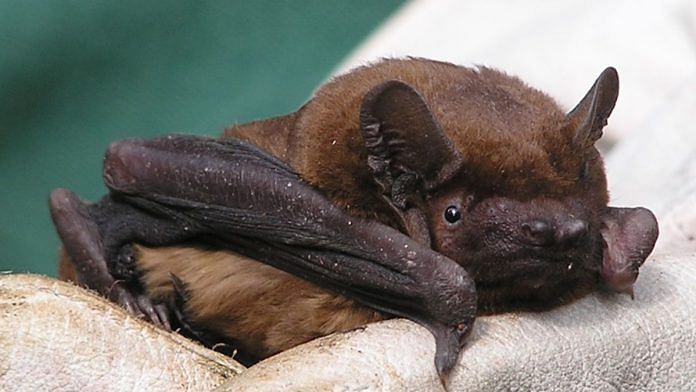New Delhi: A new study has uncovered the migration strategy of a mammal species called common noctule bat, which travels thousands of kilometres every spring across Europe. Published Thursday in the journal Science, the study finds that these bats use warm storm fronts to aid their migration and conserve energy while flying.
Warm storm fronts are travelling masses of warm air which occur right before a storm or before rain.
Scientists put sensor tags on 71 bats and tracked them during spring to assess their routes, stops and flying patterns. They found a spurt of flight activity every time warm fronts were present.
The study marks the first time migratory activity of noctule bats is being observed carefully, since migration is largely believed to be the forte of birds.
However, by studying bat behaviour, these scientists found some new information such as the fact that some of them travel up to 400 km in one night.
Surprisingly, noctule bats neither eat too much nor gain too much weight before migration.
Instead, they follow a hopping pattern with lots of stops in between to keep eating throughout their journey.
Also Read: 2024 Physics Nobel for AI scientists. How they pioneered machine learning modelled on human brain
Chinese scientists have found evidence that the Moon had a weak magnetic field up until two billion years ago.
This is a significant discovery for researchers trying to understand the lunar dynamo, a process by which the magnetic field of the Moon came into being and then slowly faded, which is still a mystery.
As part of the study published Wednesday in the journal Science Advances, the scientists used samples collected from China’s Chang’e 5 mission.
Magnetisation tests revealed that two billion years ago, these rocks had a magnetic field with an intensity of two to four microtesla which, though weak, served as evidence of the presence of a magnetic field. One of the theories posited by the scientists is that thermal convection or the movement of rocks and materials inside the Moon could have kept the magnetic field active.
In last ice age, wildfires increased during abrupt climate change periods
Abrupt periods of climate change during the last ice age or glacial period—which began about 100,000 years ago and lasted until about 25,000 years ago—coincided with increased wildfires, a new study has found.
The finding was made as a result of scientists studying sources of ancient gas bubbles trapped in Antarctic ice.
The study was published Wednesday in the journal Nature.
Previous research has shown that the last ice age had certain periods of abrupt increase in climate change phenomena characterised by abnormal temperature rises and changing rainfall patterns. During such periods, there was also an increase in methane levels, as revealed by the presence of bubbles of the greenhouse gas trapped in Antarctic ice.
The reason behind this, however, was not known. Until now.
Analysis of ancient methane bubbles trapped in Antarctic ice using a mass spectrometer by US and Swiss scientists has shown that global forest fires may have resulted in the rise in atmospheric methane in the last ice age.
The study is the first to explain spikes in methane during the last glacial period, and indicates a better understanding of the cycles of climate change in the past.
Why most cancers spread to lungs
Belgian scientists have found a reason behind why lungs are a frequent target for cancer metastasis or the spread of cancer cells. More than half of cancer patients see their tumours spread beyond the primary site into the lungs, a condition known as lung metastasis.
The reason, according to a new paper published Wednesday in the journal Nature, is the existence of aspartate in the lungs, an amino acid that allows easier translation (process in which cells use messenger RNA to create proteins) of cancer cells in the lungs as opposed to other parts of the body.
Aspartate is present in large amounts in the lungs and triggers a certain protein receptor in cancer cells, allowing them to grow aggressively by providing a more suitable environment.
The significance of the discovery is that scientists can now look for drugs and therapies that will target this translation process of cancer cells in lungs with the aim of reducing lung metastasis.
(Edited by Radifah Kabir)






